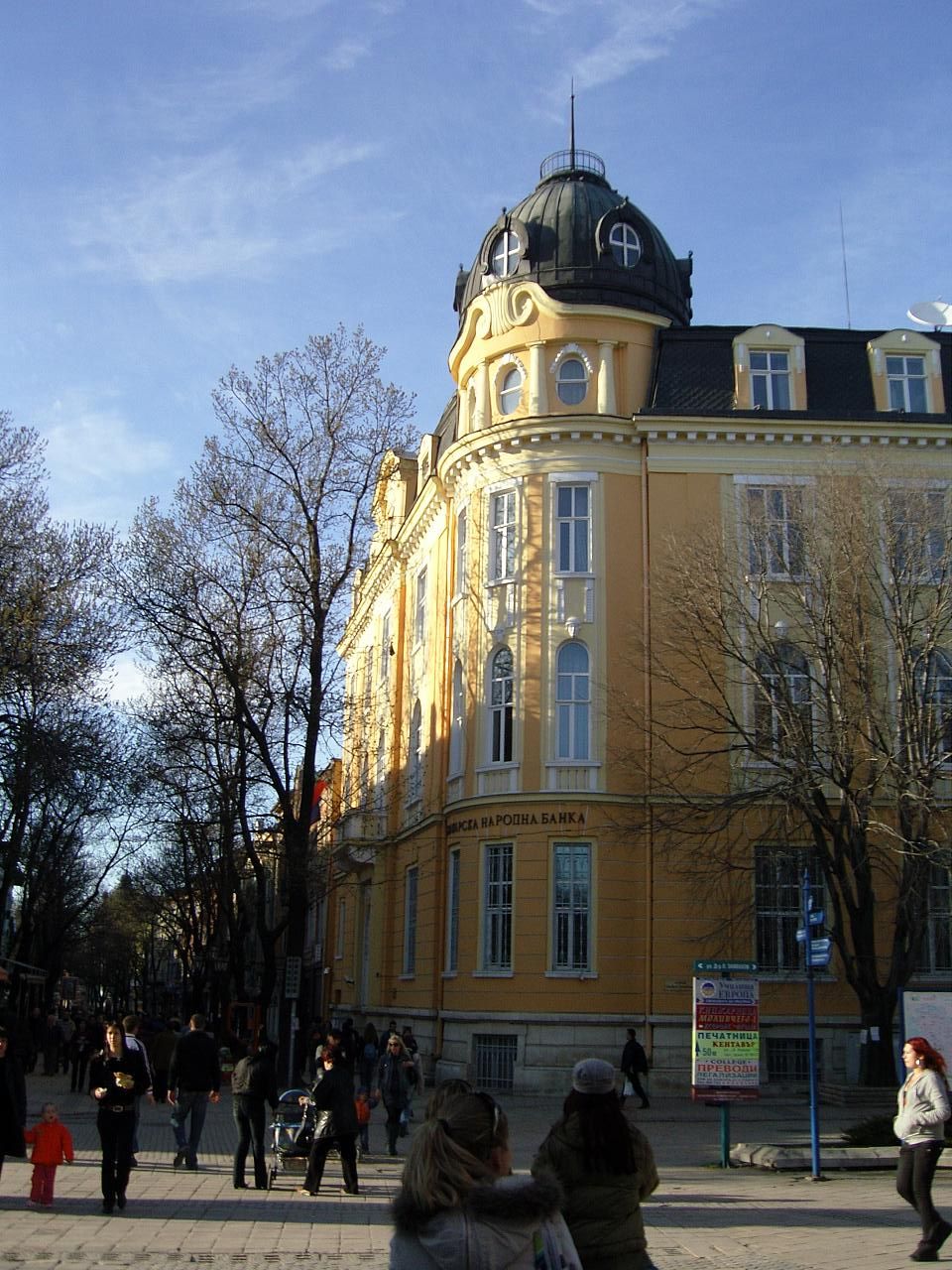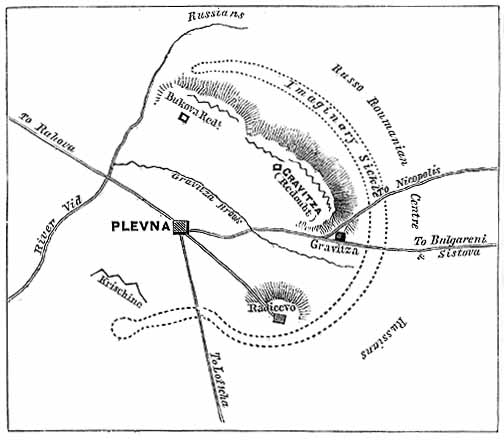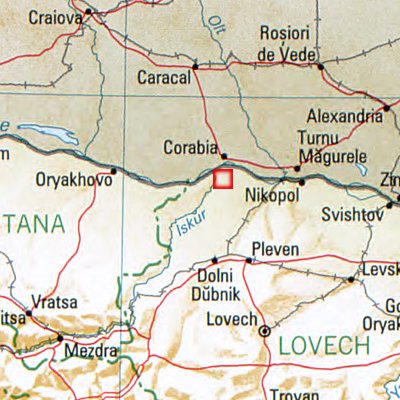|
Pleven
Pleven ( ) is the seventh most populous city in Bulgaria. Located in the northern part of the country, it is the administrative centre of Pleven Province, as well as of the subordinate Pleven municipality. It is the biggest economic center in Northwestern Bulgaria. At the 2021 census its population was 89,823. Internationally known for the siege of Plevna of 1877, today it is a major economic centre of the Bulgarian Northwest and Central North and the third largest city of Northern Bulgaria after Varna and Ruse. Name The name comes from the Slavic word ''plevnya'' ("barn") or from ''plevel'', meaning "weed", sharing the same root, and the Slavic suffix ''-en''. Geography Pleven is in an agricultural region in the middle of the Danubian Plain, the historical region of Moesia, surrounded by low limestone hills, the Pleven Heights. The city's central location in Northern Bulgaria defines its importance as a big administrative, economic, political, cultural and transport ce ... [...More Info...] [...Related Items...] OR: [Wikipedia] [Google] [Baidu] |
Pleven Municipality
Pleven Municipality () is a municipality ('' obshtina'') in Pleven Province, Northern Bulgaria. It is named after its administrative centre - the city of Pleven which is also the capital of the Province. The municipality embraces a territory of with a population, as of December 2009, of 138,095 inhabitants. Settlements (towns are shown in bold): Demography The following table shows the change of the population during the last four decades. Religion According to the latest Bulgarian census of 2011, the religious composition, among those who answered the optional question on religious identification, was the following: See also *Provinces of Bulgaria *Municipalities of Bulgaria *List of cities and towns in Bulgaria This is a complete list of all cities and towns in Bulgaria sorted by population. Province capitals are shown in bold. Primary sources are the National Statistical Institute (NSI) and the Bulgarian Academy of Sciences. The largest city ... [...More Info...] [...Related Items...] OR: [Wikipedia] [Google] [Baidu] |
Pleven Province
Pleven Province ( or Плевенска Област) is a province located in central northern Bulgaria, bordering the Danube river, Romania and the Bulgarian provinces of Vratsa, Veliko Tarnovo and Lovech. It is divided into 11 subdivisions, called municipalities, that embrace a territory of with a population, as of February 2011, of 269 752 inhabitants.Census 2011 Bulgarian National Statistical Institute - Bulgarian provinces and municipalities in 2009 /ref> [...More Info...] [...Related Items...] OR: [Wikipedia] [Google] [Baidu] |
Siege Of Plevna
The siege of Plevna or Pleven, was a major battle of the Russo-Turkish War of 1877–1878, fought by the joint army of the Russian Empire and the Kingdom of Romania against the Ottoman Empire. After the Russian army crossed the Danube at Svishtov, it began advancing towards the centre of modern Bulgaria, with the aim of crossing the Balkan Mountains to Constantinople, avoiding the fortified Turkish fortresses on the Black Sea coast. The Ottoman army led by Osman Pasha, returning from Serbia after a conflict with that country, was massed in the fortified city of Pleven, a city surrounded by numerous redoubts, located at an important road intersection. After two unsuccessful assaults, in which he lost valuable troops, the commander of the Russian troops on the Balkan front, Grand Duke Nicholas of Russia insisted by telegram on the help of his Romanian ally King Carol I. King Carol I crossed the Danube with the Romanian Army and was placed in command of the Russian-Roman ... [...More Info...] [...Related Items...] OR: [Wikipedia] [Google] [Baidu] |
List Of Cities And Towns In Bulgaria
This is a complete list of all cities and towns in Bulgaria sorted by population. Province capitals are shown in bold. Primary sources are the National Statistical Institute (NSI) and the Bulgarian Academy of Sciences. The largest city is Sofia, with about 1.4 million inhabitants, and the smallest is Melnik, with about 300. Towns are not necessarily larger than all villages. Indeed, many villages are more populous than many towns–compare for instance Lozen, a large village with more than 6,000 inhabitants, with Melnik. List See also *List of villages in Bulgaria * Nomenclature of Territorial Units for Statistics (NUTS) of Bulgaria *List of cities in the European Union by population within city limits *List of European cities by population within city limits References External links Map main cities in BulgariaaVisitmybulgaria.comMap of Bulgarian towns at BGMaps.com* Veliko Tarnovo of BulgariaMap of Bulgaria {{DEFAULTSORT:List Of Cities And Towns In Bulgaria ... [...More Info...] [...Related Items...] OR: [Wikipedia] [Google] [Baidu] |
Oescus
Oescus, Palatiolon or Palatiolum (, ) was an important ancient city on the Danube river in Roman Moesia. It later became known as ''Ulpia Oescus''. It lay northwest of the modern Bulgarian city of Pleven, near the village of Gigen. For a short time it was linked by the longest and most famous stone bridge across the Danube, Constantine's Bridge, with the ancient city of Sucidava (modern-day Corabia, Romania). The city seems to have at one point reached a area of 280,000 m2 and a population of 100,000. Archaeological excavations have brought to light parts of the ancient city and are continuing. Etymology The name of the Roman town comes from the river Oescus (today Iskar). It probably meant "water" in the local Thracian dialect. History The Greek geographer Claudius Ptolemy (ca. 90–168 AD) described Ulpia Oescus as a city of the Triballi, an independent ancient tribe which inhabited today’s northwestern Bulgaria. Under Roman rule, Oescus began as an impor ... [...More Info...] [...Related Items...] OR: [Wikipedia] [Google] [Baidu] |
Vit (river)
The Vit (; ) is a river in northern Bulgaria, a right tributary of the Danube. Its length including the main stem Beli (White) Vit is 189 km, while the river proper, formed by the confluence of the Beli and Cherni (Black) Vit is 153 km. Vit Ice Piedmont in Antarctica is named after the river. The fish species Cottus haemusi, Vit sculpin of the genus ''Cottus (fish), Cottus'' is endemic to the Vit. Geography Course The main stem the Beli Vit is 36 km long and takes its source at an altitude of 1,595 m on the western foothills of the summit of Yumruka (1,819 m) at the boundary between the Zlatitsa–Teteven and the Troyan sections of the Balkan Mountains and flows in general direction northwest in a steep forested valley. The other stem, the 27 km long Cherni Vit, springs at an altitude of 1,980 m about 800 m northwest of the summit of Baba (2,070 m) in the Zlatitsa–Teteven section of the Balkan Mountains and flows north in a deep f ... [...More Info...] [...Related Items...] OR: [Wikipedia] [Google] [Baidu] |
Gigen
Gigen (, ) is a village in northern Bulgaria, part of Gulyantsi Municipality, Pleven Province. It is located near the Danube River, opposite the Romanian town of Corabia. , Gigen has a population of 1,641 inhabitants. Gigen Peak on Graham Land in Antarctica is named after the village. Geography The village is situated in the central division of the Danubian Plain in the fertile Chernopolska lowland at an altitude of 88 m. It lies just across the right bank of the river Iskar, some three kilometers from its confluence with the Danube. It falls within the temperate continental climatic zone. The soils are alluvial and chernozem. Administratively, Gigen is part of Gulyantsi Municipality, situated in the northwestern part of Pleven Province. Its territory is 65.605 km2. The closest settlements are the villages of Baykal to the west, Iskar to the southwest, Brest to the southeast, and Zagrazhden to the northeast. Gigen is situated on the second class II-11 r ... [...More Info...] [...Related Items...] OR: [Wikipedia] [Google] [Baidu] |
Storgosia
Storgosia was a Roman road station and later a fortress, located in the modern Kaylaka Park in the vicinity of modern Pleven (North-central Bulgaria). It accommodated detachments of Legio I ''Italica'''s Novae (modern Svishtov) garrison. The station grew to become a fortress in Late Antiquity due to Gothic and other Barbarian raids after 238. At the beginning of the 4th century, were fortified with a defensive wall that was wide. Archaeological excavations have also discovered two gates and three defensive towers, as well as residential buildings, a large 4th-century basilica of , and a public granary. The fortress existed until the end of the 6th century, when the settlement of the Slavs apparently led to its abandonment and during the rule of the Ottoman Empire The Ottoman Empire (), also called the Turkish Empire, was an empire, imperial realm that controlled much of Southeast Europe, West Asia, and North Africa from the 14th to early 20th centuries; it also cont ... [...More Info...] [...Related Items...] OR: [Wikipedia] [Google] [Baidu] |
Danubian Plain (Bulgaria)
The Danubian Plain () constitutes the northern part of Bulgaria, situated north of the Balkan Mountains and south of the Danube. Its western border is the Timok River, and to the east it borders the Black Sea. The plain has an area of . It is about long and wide. The Danubian Plain is contiguous with the Wallachian Plain (forming the Lower Danubian Plain), but its elevation is slightly higher and the relief is more hilly and rolling, featuring numerous plateaux and river valleys. The climate is markedly temperate continental with a weak Black Sea influence in the east. Precipitation is on average 450–650 mm a year. Important rivers include the Danube, the Iskar, the Yantra, the Osam, the Vit, the Rusenski Lom, the Ogosta, and the Lom. Among the major cities of the region are Rousse, Pleven, Dobrich, Shumen, Vidin, Silistra, Targovishte, Razgrad, Svishtov and Lom. Minerals The Danubian Plain contains a wide variety of minerals, such as: * Lignite (Lomski ... [...More Info...] [...Related Items...] OR: [Wikipedia] [Google] [Baidu] |
Northern Bulgaria
Northern Bulgaria (), also called Moesia (, ''Mizija'') is the northern half of Bulgaria, located to the north of the main ridge of the Balkan Mountains which conventionally separates the country into a northern and a southern part. Besides the Balkan Mountains, Northern Bulgaria borders the Timok River and Serbia to the west, the Danube River and Romania to the north, and the Bulgarian Black Sea Coast to the east. Geographically, the region's terrain is relatively uniform, dominated by the hilly Danubian Plain, with some low plateaus to the east. Northern Bulgaria covers an area of 48,596 square kilometres and has a population of 2,674,347 according to the 2011 census [...More Info...] [...Related Items...] OR: [Wikipedia] [Google] [Baidu] |
Bulgaria
Bulgaria, officially the Republic of Bulgaria, is a country in Southeast Europe. It is situated on the eastern portion of the Balkans directly south of the Danube river and west of the Black Sea. Bulgaria is bordered by Greece and Turkey to the south, Serbia and North Macedonia to the west, and Romania to the north. It covers a territory of and is the tenth largest within the European Union and the List of European countries by area, sixteenth-largest country in Europe by area. Sofia is the nation's capital and List of cities and towns in Bulgaria, largest city; other major cities include Burgas, Plovdiv, and Varna, Bulgaria, Varna. One of the earliest societies in the lands of modern-day Bulgaria was the Karanovo culture (6,500 BC). In the 6th to 3rd century BC, the region was a battleground for ancient Thracians, Persians, Celts and Ancient Macedonians, Macedonians; stability came when the Roman Empire conquered the region in AD 45. After the Roman state splintered, trib ... [...More Info...] [...Related Items...] OR: [Wikipedia] [Google] [Baidu] |




